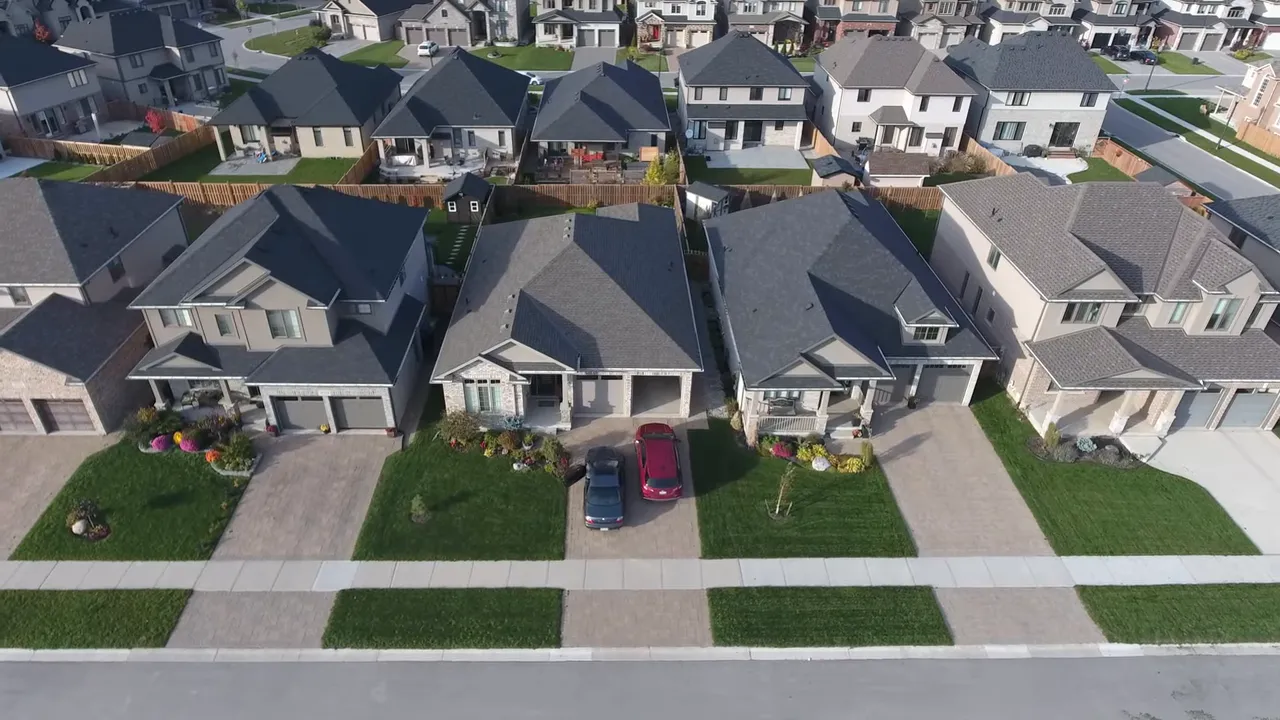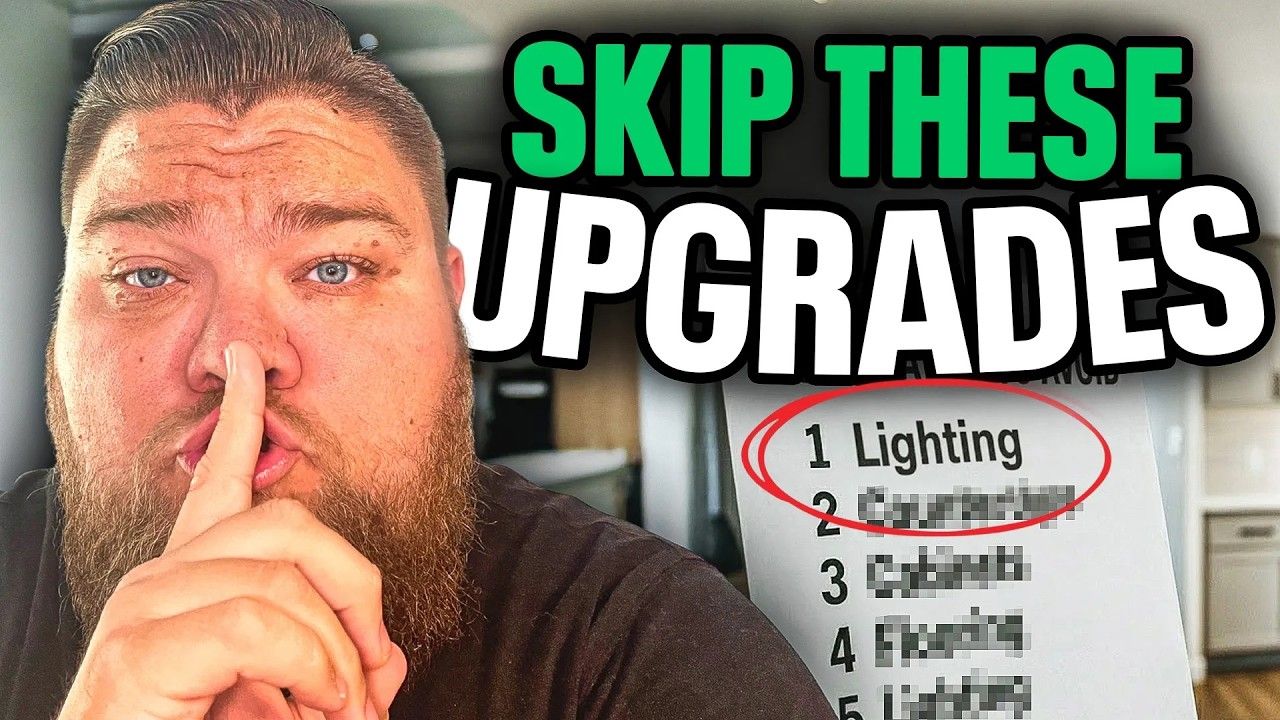Don’t Skip This Step Before Closing on Your New Home
If you are buying new construction in DFW, there is one step you cannot skip: the blue tape walkthrough. This orientation, pre-closing walkthrough, or presentation is your chance to verify the function and finish of your brand new house and to create a punch list before you sign on the dotted line. I want to walk you through exactly what to expect, what to test, and how to mark issues so you protect your investment and move in with confidence.
Table of Contents
- Pro Tips for a Smooth Blue Tape Walkthrough in DFW
- Hire a Home Inspector Before Your DFW Blue Tape Walkthrough
- How the Blue Tape Walkthrough Works: Function and Orientation
- Garage and Mechanicals: What to Check During Your Walkthrough
- After the Walkthrough: Punch List, Final Review, and Builder Warranty
- Pro Tips for a Smooth Blue Tape Walkthrough in DFW
- FAQs About Doing Your Blue Tape Walkthrough Before Closing in DFW
- Final Thoughts on Buying New Construction and Your Blue Tape Walkthrough
Why the Blue Tape Walkthrough Matters When Buying New Construction in DFW
Buying new construction in DFW is exciting and often stressful. You have invested multiple hundreds of thousands of dollars into a home and the blue tape walkthrough is your opportunity to make sure the builder is delivering what they promised. The walk is twofold: confirm the home is functional and cosmetically acceptable, and learn how everything works so you know where the shutoffs, electrical panels, and controls live.
Plan on spending two and a half to three hours in the walkthrough for an average-sized home. Take notes, mark defects with blue tape, and treat the walkthrough like an inventory and orientation combined.

Hire a Home Inspector Before Your DFW Blue Tape Walkthrough
I cannot stress this enough: if you are buying new construction in DFW, hire a licensed home inspector before the blue tape walkthrough. Expect to pay roughly $400 to $700 depending on the inspector and scope. The inspector is a generalist whose job is to verify that the systems in the home function as designed. They will check HVAC, plumbing, electrical, roof, and structure. Having that report in-hand before your orientation allows the builder to address items ahead of time and gives you an objective list to review during the walkthrough.
Game plan: if your builder schedules your orientation for a Thursday, get the inspector out on Tuesday or Wednesday. Send the report to your builder and bring it with you. Inspectors catch things builders sometimes miss and call out items you might not notice, like water pressure being too high or an improperly wired plug.
How the Blue Tape Walkthrough Works: Function and Orientation
Think of the walkthrough as a two-part meeting. First, you walk through room by room, marking cosmetic and functional issues with blue tape. Second, the builder or warranty rep walks you through operating instructions: how to change air filters, how the sprinkler system zones run, how to use the tankless water heater, and where the whole-home shutoffs are.
Bring a checklist and a charged phone to photograph anything you mark. Use a consistent method of marking—tear a small piece of tape and point it at the flaw or place an X on the floor if the problem is on the ceiling. That way everyone understands what you are flagging.
Garage and Mechanicals: What to Check During Your Walkthrough
Start in the garage. Builders vary on garage finishes: some paint and texture, others leave it raw. Look for unfinished insulation, missing baseboards, or exposed areas that look out of place. Ask whether certain allowances apply to the garage. If something looks sloppy—like exposed insulation taped to the gypsum—that is worth marking.
Ask to be shown the attic and the whole-home water shutoff. Small tips here: ask the builder to leave you a brand new air filter upon closing. After weeks of construction the filter is likely full of dust and one new filter is an easy courtesy many builders will provide if you ask before closing.
Inspect the breaker panel. Builders sometimes put a lock on it during construction; confirm they will remove that lock before you close. Ask how GFCIs and breakers are labeled. If anything trips during testing, document it and let the inspector double-check wiring.
Inside the House: Doors, Switches, Laundry and Drywall
Inside, the basics matter: grab every single door and ensure it latches and locks. Test every light switch and all the outlets. If you have pre-wired ceiling fan locations, understand that the extra switch might be the fan feed and that no fan is installed yet. That does not mean the switch is broken. Ask how the lighting and fan controls are wired.
In the laundry room, inspect the laundry outlet box, the in-wall dryer vent, and the washer hookups. Mark scuffs and blemishes. If you have an older dryer from a previous home, understand that some code changes may require flipping dryer wiring if a GFCI trips; builders or your electrician can walk you through that fix.
When you see nail pops or small drywall defects high on a wall or ceiling, mark them with blue tape. For spots that are out of reach, place an X on the floor below so the crew knows where to touch up paint or fill nail holes.
Kitchen Checklist: Counters, Cabinets, Appliances and Gas Valves
The kitchen gets used a lot, so check it carefully. Inspect countertops and backsplashes for chips and make sure tile grout is even. Builders commonly use grout with a sealant, but they will tell you that counters and backsplashes are not fully sealed like a homeowner finishes them. My recommendation is to seal grout before any heavy cooking to protect it from stains.
Test all appliances: oven, microwave, dishwasher, and range. Run the disposal and ask how to manually unclog it. Open every cabinet and drawer. If a drawer is misaligned or a cabinet door hangs off-center, request a cabinet punch. A cabinet punch is when the cabinet company returns to adjust door alignments, soften closers, and make sure everything operates smoothly.
If the home has gas appliances, ask the builder to show you each gas shutoff. Typically there is a shutoff under the appliance cabinet. Know where they are for safety and maintenance.
Marking Imperfections Like a Pro and Reading Builder Quality
Here is a very useful rule I give all my clients: the CO rule, or the 4 to 6 foot rule. If you can stand 4 to 6 feet away and see a blemish on a wall, mark it. If you have to get right up against the wall and stare at it for 10 seconds, chances are you will drive yourself crazy if you mark everything. Focus on things you can notice from a normal vantage point.
You can often tell the difference between a builder that cares and one that does not by how they handle the walkthrough. A great sign is when the builder brings a warranty representative who actively points out things that they will fix. That means the team is being proactive and honest rather than defensive. A builder that explains why they will not fix a specific item is also preferable to one that simply says no.
Be firm but kind during the walkthrough. Most of the people you will interact with are local tradespeople trying to get the home ready for you. Treating them respectfully goes a long way toward smoother repairs and better service after you move in.
Windows, Locks, and Fan Pre-Wire: What to Test
Open and close every window. If you have windows that tilt in, learn how to engage the tilt function so you can clean the outside of the panes from inside. Many tilt mechanisms have no counterweight; do not let go when the window is tilted or it will fall. Test that every lock engages properly.
Inspect window screens, check tracks for smoothness, and mark any nail pops or unfinished trim around windows. Also test any motorized shades or specialty hardware if your home has them.
Exterior Reality: Concrete Cracks, Brick Weep Holes and Drainage
One sad truth about buying new construction in DFW is the soil. North Texas soil tends to be red clay which moves over time. That movement causes concrete to crack. There are two types of cracks you will see: hairline surface cracks which are nonstructural and larger movement cracks that might indicate foundation issues.
Rule of thumb: small surface cracks in driveways and patios are often considered normal and nonstructural. Builders typically will not replace or repair every small cracking slab because it will likely reappear. If you can slide a quarter into a crack and the slab shifts, report it immediately and consider a warranty claim. Foundation cracks or sloping slabs are a different matter and should be addressed.
On brick, you may see small holes high on the facade. Those are often intentional weep holes to allow moisture to escape from behind the brick veneer. Brick is a facade; it is not structural. Mortar may shrink and crack slightly over time, and minor mortar repairs can be handled by the builder before closing if visible on inspection. If the mortar pattern becomes a network of cracks, document it and pursue warranty repair.
Also check yard grading and look for standing water. Many builders install a shallow swale to direct water away from foundations. If water pools more than 48 to 72 hours after a storm, have the builder evaluate drainage as it may require correction.
Bedrooms, Baths and Upstairs Notes
Go room by room. Run every faucet, check water temperature, flush toilets, and shower for consistent pressure. Look under sinks for leaks. Test vents to ensure HVAC airflow is present. Check tile grout, caulk lines, and shower door operation.
On stairs, make sure railings are secure and paint touch-ups are complete. Second-floor carpets should be properly nailed or glued down and finished at thresholds. If you hear floor squeaks, document their location. Small floor movement is common but major shifts or dips need attention.
Thermostats should be demonstrated to you so you understand how to operate heating and cooling zones. Ask where the filter size is written and how often the builder recommends filter changes during the warranty period.
After the Walkthrough: Punch List, Final Review, and Builder Warranty
After you complete the walkthrough, the builder should document your punch list and ask you to sign acknowledgment that the issues were discussed. The builder will then schedule contractors to perform the repairs. Depending on the builder, you may be invited back the morning of closing for a quick 15-minute walk to confirm fixes and receive keys.
Some buyers ask whether they should have the inspector revisit after repairs. You can, but many buyers rely on builder-provided third-party reports. If something major was found during the inspection and repaired, request the contractor's report so you have it in writing for your records.
Keep in mind warranty policies vary by builder. All warranties require you to report defects, and timelines for warranty responsiveness vary. Make sure you know how to submit a warranty claim and who to contact. A builder that is responsive during the blue tape walk is likely to be responsive after closing as well.
Complete Punch List Checklist for Your Blue Tape Walkthrough
Print or copy this checklist and take it with you when buying new construction in DFW. Use blue tape or removable labels to mark each issue.
- Home inspection completed and report sent to builder
- Attic access and insulation review
- Whole-home water shutoff located and demonstrated
- Breaker panel labeled and lock removal confirmed
- Air filters size and a new filter requested
- Sprinkler map and irrigation zones reviewed
- Garage walls and baseboard finish verified
- Doors: open/close, latch, and lock tested
- Windows: open/close, tilt function, locks and screens tested
- Light switches and outlets tested in every room
- Kitchen: counters, backsplash, appliances, cabinet alignment
- Gas appliance shutoffs identified
- Plumbing: run faucets, check under sinks for leaks, flush toilets
- HVAC: thermostat operation and airflow verification
- Stair railings and carpet transitions inspected
- Exterior: brick, mortar, weep holes, and visible grading
- Concrete: note surface cracks; flag potential structural movement
- Note any nail pops or paint touch-ups and mark with tape
- Request final clean, pest treatment, landscaping touch-ups if needed
- Confirm warranty process and emergency contacts
Pro Tips for a Smooth Blue Tape Walkthrough in DFW
- Hire a home inspector before the walkthrough. That report is your objective starting point.
- Use the 4 to 6 foot rule. If you can see a blemish from a normal standing distance, mark it.
- Ask for one new air filter before closing. Construction leaves dust everywhere and one new filter is an easy courtesy.
- Keep a handful of leftover bricks. If a section of brick needs repair later, matching color and size is easier if you saved extras.
- Request final landscaping touch-ups. Ask for an extra mow or fresh mulch before move-in to reduce your to-do list on moving day.
- Bring a flashlight and phone with camera. Photograph everything you mark for your records.
- Be kind and clear. Your demeanor matters when trades return to fix issues.
FAQs About Doing Your Blue Tape Walkthrough Before Closing in DFW
How long does a blue tape walkthrough usually take?
Plan for about 2.5 to 3 hours for a thorough walkthrough on an average-sized home. Bigger homes and more detail-oriented buyers may take longer. Schedule enough time so you can be thorough without rushing.
Do I really need a home inspection if the house is new?
Yes. Even new construction benefits from an independent inspection. Inspectors are generalists who verify HVAC, plumbing, electrical, roof and overall structure. Their report gives you leverage to have fixes completed before closing and documents conditions for warranty claims.
What should I bring to the walkthrough?
Bring the inspector report, a checklist, blue painter’s tape, a flashlight, a charged phone for photos, a tape measure, and a pen to take notes. Wear comfortable shoes and be prepared to spend a few hours walking every room.
Will the builder fix everything I mark with blue tape?
Most reputable builders will document and fix punch list items. However, some items might be considered allowances or nonstructural (like small concrete cracks). Ask the builder to explain why something will or will not be fixed. Their responsiveness during the walkthrough is a good indicator of post-closing service.
Should I have my inspector come back after repairs?
You can if you want additional assurance, but most buyers accept the contractor or third-party repair reports provided by the builder. If a major structural or system issue was corrected, getting documentation from the contractor is a reasonable middle ground.
What is the 4 to 6 foot rule?
The 4 to 6 foot rule is a practical guideline: if you can see a defect from 4 to 6 feet away under normal viewing conditions, mark it. If you need to press your nose to the wall to spot something, it is usually not worth fighting over during a blue tape walk.
How do I mark items on high ceilings or inaccessible spots?
If the problem is high on the ceiling, place an X on the floor beneath the defect and tell the builder the location. For walls that are too high to reach, tear the tape in half and form a small arrow pointing to the area so contractors can easily find it.
What about landscaping and yard concerns?
Ask the builder to mow and remulch before closing if timing permits. Inspect grading and drainage and report standing water that persists 48 to 72 hours after rain. Yards are typically engineered to direct water away from the foundation, but issues do occur and should be evaluated while the builder is still responsible.
Final Thoughts on Buying New Construction and Your Blue Tape Walkthrough
Buying new construction in DFW is a unique experience that mixes excitement with details you must manage. The blue tape walkthrough is your creation point for a documented punch list and an orientation that will make your first days in the house smoother. Hire a good inspector, take your time, use the 4 to 6 foot rule when flagging imperfections, and be thorough in testing systems and demonstrating operation.
Builders differ in quality and responsiveness. You can tell a lot about a builder by how they conduct the walkthrough and whether their warranty rep actively points out fixes rather than avoids them. Be firm, be prepared, and be kind. That combination usually yields the best results and a much less stressful move-in.
If you take one thing away from this guide, let it be this: do not skip the inspection and do not skimp on the walkthrough. Your home is the biggest purchase most of us make. Investing the time now to properly document and understand its systems will protect your money and your peace of mind.
If you need help buying a home or want a guided walkthrough for new construction in DFW, reach out — I’d love to help. Call or text: (469) 707-9077.

Zak Schmidt
From in-depth property tours and builder reviews to practical how-to guides and community insights, I make navigating the real estate process easy and enjoyable.













